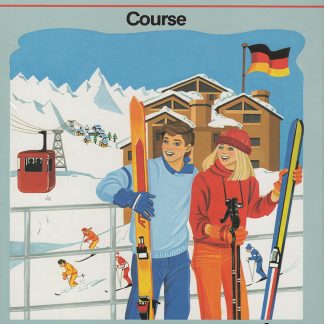Description
German Course Part 2 Horan & Slinn: Textbook – ©2020 – 2025
NB: Available NOW in these formats – Kindle eBook and Print on demand Paperback & HardCover.
This book continues the basic approach of Book 1, and continued in Part 3. It provides oral-aural material for active
Use in the classroom. Follow-up in writing can consolidate the practised skills effectively. Students progress systematically, the language structures being presented in everyday situations. A wide range of exercises caters for the needs of all students. Sets of revision exercises keep structures under review and serve further as a foundation for the presentation of new material. A comprehensive appendix will be found useful as a key to the grammar of the German language.
Dialogues play a considerable role in order to afford practice in understanding and speaking. They present good up-to-date colloquial and idiomatic German. A wide range of speaking situations will consolidate the student’s ability to express ideas orally in German. particular attention has been paid to the vocabularly of Das Zertifikat – Deutsch als Freunddsprache.
An important element of the present book is the extensive reading-comprehension material. A rich cultural setting, evoking a picture of the German people, their ways and their land, is provided. Personal impressions of German folk, often presented in a lighhearted, humorous way, add a lively interest. The material has been selected and adapted from various sources. In particular we wish to thank the producers of Jugendscala. Such material provides an excellent basis for the development of both written comprehension and speaking skills as required by modern syllabi.
As with Book I, a set of listening skills for each lesson has been developed and these are available. The dialogue sections of each lesson have also been recorded.
These sections are coded throughout the book with a special sign.
We are pleased to express our gratitude for the assistance and contributions of Mr H. Sturm, Mrs I. Leake, Miss I. Gugger and Miss M. Springorum of the Fort Street High staff in the preparation of these materials. We would further like to acknowledge the many valuable comments made by the Language staffs of both Fort Street and Wiley Park Girls’ High Schools in their use of the book. For assistance with the preparation of the speaking skills and for helpful advice with the text, we are most grateful to Mr P. Gannsmann and Mr R Krieger, German advisers in New South Wales schools. The enthusiasm of teachers and of students using Part I in many schools has been most encouraging and we indicate our warm appreciation.
It is trusted that the book will serve its purpose for all learners of German, providing enjoyment and pleasure in the learning process and ensuring progress in language proficiency.
R. S. Horan
J. S. Slinn
This sign indicates that the section is available on XX
German Course Part 2 Horan & Slinn: Textbook – Kindle Edition ©2020
Other Resources in the German Courses:
- German Course Part 1 Textbook
- German Course Part 1 Audio Manual
- German Course Part 1 AUDIO Files
- German Course Part 2 Textbook
See the rest of GERMAN Course Books:
See our Pet Care Books & Courses




